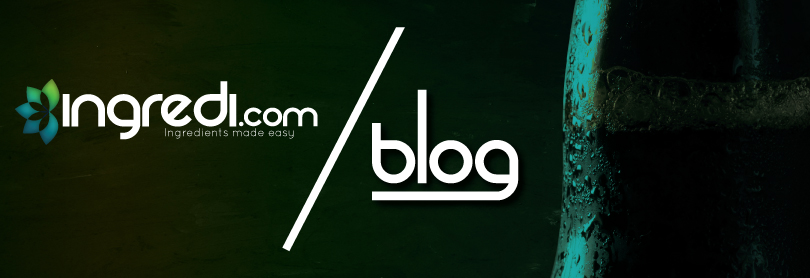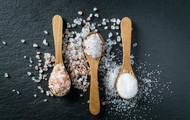Salt Isn’t as Simple as It Sounds
By on Dec 9th 2020

You may not even blink when looking at the price of salt at the store, but salt was once worth just as much as gold. Humans have always needed salt because it keeps our bodies working and is an important electrolyte. We need electrolytes for our organs and muscles to functioning properly. Therefore, it is important to have salt in your diet.
Salt has been a precious commodity ever since it was first extracted from the ocean long ago. It was originally important because of its ability to preserve meat by removing moisture that would otherwise cause bacteria. It was also an important part of making and drying leather and it had various other uses.
Salt & the American Civil War
Salt was so important in fact that people have even fought in wars over it. Salt played an important role in the American Civil War where the union targeted inland salt production, so the Confederacy was forced to pay more for it to be produced on the coast. Years later, salt had not lost its prevalence when again it played a crucial role in winning India’s independence. A man you might have heard called Gandhi was trying to win independence from Britain’s colonial rule by using peaceful civil disobedience. One way that Gandhi protested British rule was with his famed salt march to Dandi. In this march Gandhi protested the tax the British had placed on salt by making his own salt from the ocean. This was very important in forwarding India’s independence movement.
Different Types of Salt
While we might not be leveraging salt to settle wars today, Salt is probably more important to consumers than it has ever been. The varying types of salt are almost endless. Most of us are familiar with the more common names such as table salt, kosher, and sea salt. But consumers have become a lot more fickle about their salt requirements. Whether it be a crunchy salt that stays on your soft pretzel, or a briny salt that offsets the sweet taste of a caramel candy, there are endless varieties to choose from. Salt at its core is simply Sodium Chloride. It is how Sodium Chloride is processes and where is originates from that makes the difference.
Table Salt

The one salt that is most familiar to all of us is Table Salt. It is pure Sodium Chloride that is manufactured to a specific grain size that is normally square in shape and flows easily from a saltshaker. Additionally, it will have an anti-caking additive incorporated in it, so it doesn’t turn into a solid block preventing it from pouring. But it is the grain size of Table Salt that is most important. When following recipes, you would not want to substitute Sea Salt or Kosher Salt because their grain size would change the true measured amount of sodium chloride needed to make the end product work. Not only could the taste be off, but the texture can be changed if the salt doesn’t dissolve completely.
Kosher Salt

Another popular staple in most home chef’s pantries is Kosher Salt. Now this salt is all about the grain size. In actuality, any salt can be a “Kosher” salt. If a salt is processed under Kosher regulations and blessed by a Rabbi, it is a Kosher approved salt. With that being said, salt commercially branded “Kosher” is generally a larger grain of salt that hold their structure and don’t dissolve as quickly. They are popular for use in pickling brines as well as food seasonings for their appearance and mouth feel. These large or coarse grain salts have become very popular. Not only for their appearance but the flavor and texture they impart. They come in shapes that are star, flaked, cubed and can be clear, hazy or pure white. It all comes down to the look, mouth feel and taste you desire to achieve.
Sea Salt

Now what is Sea Salt you ask? Sea salt is simply sodium chloride that is gathered from the sea and not from rock salt mines. What a lot of sea salt manufacturers will do is leave some additional elements in the salt that reflect the region the salt is from. These additional elements are said to impart additional flavor and color as well as health benefits. While not a sea salt, Himalayan salt is popular example of this process with its bright pink color. This vibrant color comes from trace minerals such as magnesium, potassium, and calcium. Although Himalayan salt does contain these extra important minerals, the amount present likely is not enough to give you any major health benefits. So, while Sea Salt is promoted for its health benefits, it is really its taste that should be the deciding factor as to use it or not. As with regular salt, sea salt comes in many different grain sizes as well as batches of mixed grain sizes to impart a more authentic, fresh from the sea look.
Sodium Content by Weight
Wherever a salt comes from or how it is manufactured, the most important thing is the sodium content by weight. This is generally the same for most salts. Pure salt by weight is 40% sodium and 60% chloride. Americans often consume too much salt, about 3,400mg a day. Salt seems to appear in every tasty food we eat, but it is important to balance your sodium intake and not consume too much as it could potentially cause high blood pressure. The recommended daily salt intake is no more than 2,300mg of sodium a day, which is about 1 teaspoon’s worth according the CDC. It is important to note that some people are more sensitive to salt than others. Salt is safe and has been around forever, as such it is generally recognized as safe (GRAS) by the FDA.
Need salt for your business? Make sure to check out Ingredi.com for our variety of salts or click the links below!
Salt, Morton TFC Purex | 50 lb Bag
Salt, Morton Top Flake Extra Coarse | 50 lb Bag
Salt, Morton Star Flake Dendritic | 50 lb Bag
Salt, Morton Purex All Purpose | 50 lb Bag
Morton Rock Pretzel Salt FCC | 50 lb Bag
Culinox 999 Food Grade Salt FCC | 50 lb Bag
Sea Salt Natural Semi-Coarse T-2 | 25 kg Bag
Sea Salt Natural Fine T-1 | 25 kg Bag
Be sure to check out our bulk pricing discount rates! Request a quote for multiple pallet quantities.
Sources:
https://www.history.com/news/off-the-spice-rack-the-story-of-salt
https://science.howstuffworks.com/innovation/edible-innovations/salt5.htm
https://www.thekitchn.com/come-along-on-a-159478
https://www.healthline.com/nutrition/salt-good-or-bad
https://www.healthline.com/nutrition/iodine-deficiency-symptoms
https://www.prnewswire.com/news-releases/most-americans-dont-understand-health-effects-of-wine-and-sea-salt-survey-finds-120595304.html
https://onlinelibrary.wiley.com/doi/abs/10.1111/j.1745-459X.2010.00317.x
https://www.who.int/nutrition/publications/guidelines/sodium_intake_printversion.pdf
https://medlineplus.gov/fluidandelectrolytebalance.html
https://www.thekitchn.com/kosher-salt-where-it-comes-from-why-its-called-kosher-ingredient-intelligence-219665
https://time.com/4834865/himalayan-pink-salt-benefits/
https://www.foodrepublic.com/2018/07/30/a-handy-guide-to-the-many-different-types-of-salt/
https://www.cdc.gov/salt/pdfs/sodium_dietary_guidelines.pdf\
https://www.insider.com/is-pink-himalayan-salt-good-for-you-2017-12






